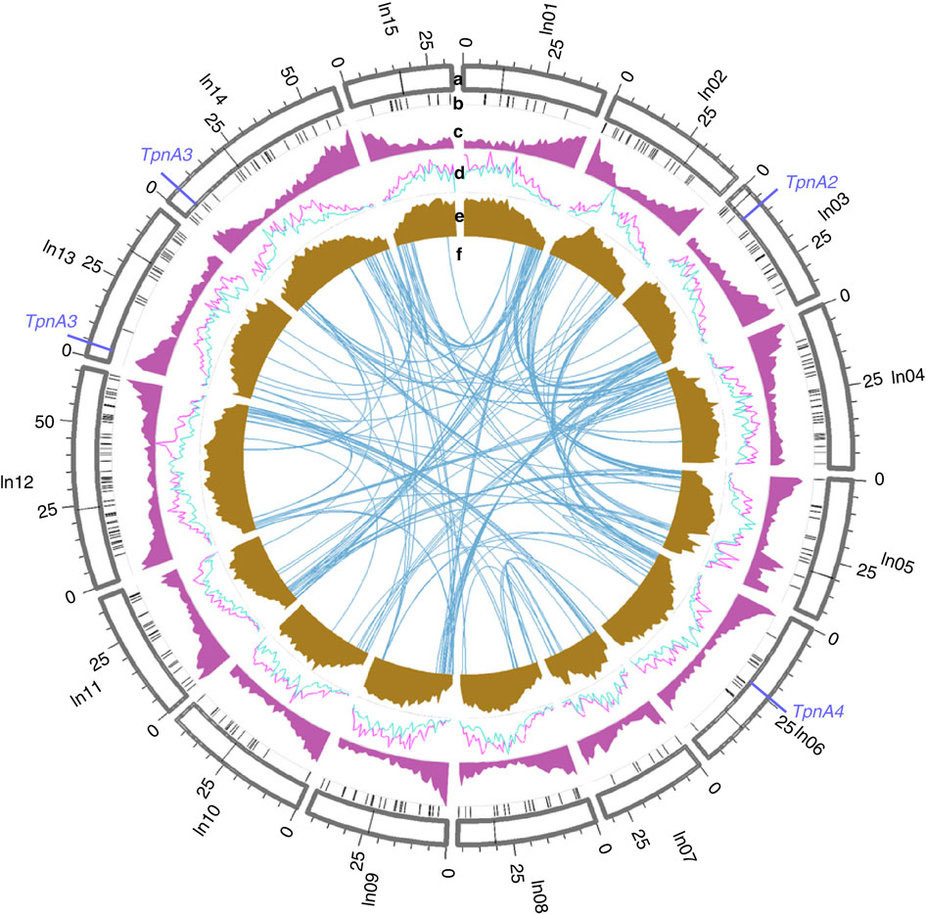アサガオゲノムの塩基配列およびその解析
Genome sequence and analysis of the Japanese morning glory Ipomoea nil
2016年11月8日 Nature Communications 7 : 13295 doi: 10.1038/ncomms13295

サツマイモ属(Ipomoea)は、ヒルガオ科で最大の属である。アサガオ(Ipomoea nil)は、花卉園芸形質の遺伝的基盤を研究するためのモデル植物として利用されており、1500種類を超える変異系統が存在する。本研究では、第二および第三世代のDNAシークエンサーを利用して、スキャフォールドN50=2.88 Mb(コンティグN50=1.87 Mb)で750 Mbのアサガオゲノムの98%をカバーする概要ゲノムを得た。アセンブリーの91.42%をカバーするスキャフォールドが、15本の擬似的な染色体に対応づけられた。この概要ゲノムにより、アサガオの主要な変異原として知られるTpn1ファミリーのトランスポゾンの同定およびカタログ化、ならびに1956年に公表された遺伝子地図に載っている矮性遺伝子CONTRACTED(渦)の解析を行うことができた。比較ゲノミクスからは、ヒルガオ科の全ゲノム重複が、最近のナス科の事象とは別に、両姉妹科の分岐後に起こったことが示唆された。
Atsushi Hoshino, Vasanthan Jayakumar, Eiji Nitasaka, Atsushi Toyoda, Hideki Noguchi, Takehiko Itoh, Tadasu Shin-I, Yohei Minakuchi, Yuki Koda, Atsushi J. Nagano, Masaki Yasugi, Mie N. Honjo, Hiroshi Kudoh, Motoaki Seki, Asako Kamiya, Toshiyuki Shiraki, Piero Carninci, Erika Asamizu, Hiroyo Nishide, Sachiko Tanaka, Kyeung-Il Park, Yasumasa Morita, Kohei Yokoyama, Ikuo Uchiyama, Yoshikazu Tanaka, Satoshi Tabata, Kazuo Shinozaki, Yoshihide Hayashizaki, Yuji Kohara, Yutaka Suzuki, Sumio Sugano, Asao Fujiyama, Shigeru Iida and Yasubumi Sakakibara
Corresponding Authors
Ipomoea is the largest genus in the family Convolvulaceae.Ipomoea nil (Japanese morning glory) has been utilized as a model plant to study the genetic basis of floricultural traits, with over 1,500 mutant lines. In the present study, we have utilized second- and third-generation-sequencing platforms, and have reported a draft genome of I. nil with a scaffold N50 of 2.88 Mb (contig N50 of 1.87 Mb), covering 98% of the 750 Mb genome. Scaffolds covering 91.42% of the assembly are anchored to 15 pseudo-chromosomes. The draft genome has enabled the identification and cataloguing of the Tpn1 family transposons, known as the major mutagen of I. nil, and analysing the dwarf gene, CONTRACTED, located on the genetic map published in 1956. Comparative genomics has suggested that a whole genome duplication in Convolvulaceae, distinct from the recent Solanaceae event, has occurred after the divergence of the two sister families.

